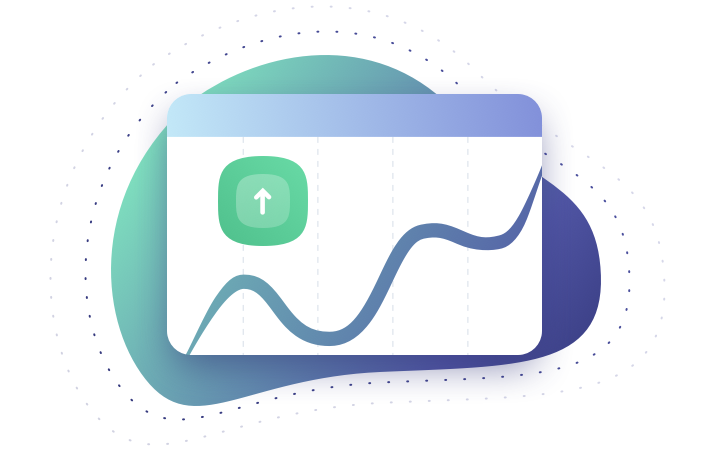Published on
Why Small and Medium Sized Companies Need Multi-CDN

Content delivery networks are distributed servers that help organizations improve access to various types of website, application and platform content. Small and medium-size companies sometimes assume that a single CDN is all that they need to support their demand, but a multi-CDN is not reserved for large enterprises alone. Several industries that particularly benefit from multi-CDNs are gaming and streaming. Here are the essential reasons that your business should look into multi-CDN architecture.
Decreasing Your Expenses
You have more opportunities to match your content to the delivery networks that work best for them, so you can lower your costs for media that doesn't require as many resources. For example, if you had a single CDN network, but you needed one capable of delivering videos, you could be paying a premium cost for non-video content as well. That's not necessary when you have multiple CDNs to choose from.
You reduce your overall content delivery costs, as you have granular control of delivery expenditure. Companies often make commitments at different price points. Once you reach the commitment at one of your CDN partners, you shift traffic between other ones so you avoid expensive overage fees.
Reaching 100 Percent Uptime
Outages and disasters are a fact of life. If your CDN provider goes down in a single-CDN environment, then you end up losing essential resources from your user experience. Multi-CDN makes it possible to have 100 percent uptime so you're always available when someone wants to use your application, platform or website. Resiliency is key for delivering a quality customer user experience.
Users don't forget when they run into problems accessing your resources. At best, they will wait again until later but be upset or disappointed about the situation. At worst, they're already clicking their way through your competitor's website or online service.
Improving Website Performance
Website visitors don't have a lot of patience. They're used to sites that load almost instantly and they're not willing to wait around for content that drags behind. A single CDN may not be able to keep up with demand during the busiest times of the day due to its capacity. Speed optimization is also important for reducing bounce rate and improving your search engine ranking position.
Optimizing Content Delivery for Multiple Media Types
Each CDN has its own strengths and weaknesses with content types. One might be great at serving up videos, while another is excellent at optimizing images to get them loaded quickly. Pay close attention to the areas that CDN specializes in and match up the appropriate media type to create a top-notch user experience.
Welcoming Your Global Audience
You can leverage CDNs from around the world to better reach your global audience. A domestic CDN can only do so much to improve loading times for someone thousands of miles away. When you invest in a multi-CDN configuration, you can work with CDNs located in your highest-demand areas.
Removing Dependency from a Single CDN Vendor
Becoming too dependent on a single CDN vendor puts your business in a vulnerable position. If they change their price structure, go out of business, or suffer from a data breach, it could take a significant amount of time to switch your content to another provider.
Multi-CDN environments remove this risk and allow you to work with multiple vendors to avoid any of these problems. Too many service providers come and go in the technology world. While you have some protection through working with established CDNs, it's better to remove this worry entirely through a multi-CDN solution.
Dynamic Load Distribution
You can use real user monitoring or other metrics to dynamically adjust the server load between more than one CDN. Since the adjustments happen in real-time, your business isn't taken by surprise by a sudden traffic surge or another source of increased demand. The load scales and is distributed seamlessly.
Protecting Against DDOS
Distributed denial of service attacks (DDOS) try to take down your network or online resources by flooding you with requests. Sometimes the attackers simply want to disrupt your operations. In other cases, they're trying to cause vulnerabilities in your system so they can cause further damage.
When they try to flood your website that's using a CDN, the service has a lot of bandwidth that can absorb the attacks. By distributing this traffic across multiple CDNs, you decrease the chances of your online resources getting taken down and you avoid costly downtime. Many CDNs also have robust protection against DDOS attacks built into the service.
These security measures will cause the cybercriminals to fail at their goals and keep your data and user experience safe.
How to Manage a Multi-CDN Environment
You may be concerned about how you can manage multiple CDNs without it becoming overly complex. One way is to use an automatic load balancing platform that's designed to work with multiple CDNs. This type of service allows you to easily set up new CDNs and manage the way that traffic is routed through this infrastructure.
Smart routing looks at several metrics to determine whether you're getting optimal performance or if the load needs to be distributed in a different way to achieve this.This type of platform also automates failover and keeps a close eye on your uptime. You shouldn't be running into any downtime when you have the right multi-CDN configuration, so it's important to streamline the process of choosing a different CDN if one goes down for a period.
Multi-CDN infrastructure comes with tons of benefits for small and medium businesses. Whether you want to keep your costs low or get better protection against downtime, this configuration gives you the competitive advantage that you need for today's business world.
Solutions such as PerfOps/FlexBalancer provide you with automated multi-CDN load balancing so you can enjoy all of the benefits without substantially increasing your management overhead.